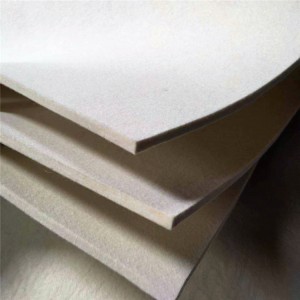In recent years, wool felt has emerged as a powerful and engaging medium in art education, captivating students of all ages and nurturing their creativity, fine motor skills, and artistic expression. Its versatility, accessibility, and tactile nature make it an ideal material for art classrooms, workshops, and educational programs around the world.
One of the primary advantages of wool felt in art education is its ability to inspire creativity. Unlike many traditional art materials, wool felt offers a unique combination of malleability and structure. Students can shape, mold, and manipulate wool fibers using techniques such as needle felting and wet felting to bring their imaginative ideas to life. Whether it’s creating a whimsical felted animal, a colorful felted landscape, or an abstract felted sculpture, the possibilities are endless. This freedom of expression encourages students to think outside the box, experiment with different forms and textures, and develop their own artistic styles.
Moreover, working with wool felt helps to develop fine motor skills in students. Needle felting, in particular, requires precise hand – eye coordination and control as students use a barbed needle to interlock the wool fibers. This repetitive motion strengthens the muscles in the fingers, hands, and wrists, improving dexterity and manual skills. For younger students, these skills are essential for tasks such as writing, drawing, and using scissors. For older students, the refined motor skills developed through wool felt work can translate into greater proficiency in more complex art forms and other hands – on activities.
Wool felt also provides an opportunity for students to learn about different cultures and art traditions. As mentioned before, wool felt has a rich history in various parts of the world, from the felt yurts of Mongolia to the intricate felt handicrafts of Nepal. Art educators can incorporate cultural lessons into their wool felt projects, teaching students about the significance of wool felt in different cultures, the techniques used by traditional artisans, and the stories behind the art. This not only broadens students’ cultural horizons but also helps them appreciate the diversity of artistic expression.
In addition to creativity and skill development, wool felt projects in art education can foster a sense of accomplishment and confidence in students. Seeing their ideas transform into tangible, beautiful works of art gives students a sense of pride and achievement. It boosts their self – esteem and encourages them to take on new challenges and explore their artistic potential further. Group wool felt projects can also promote teamwork and collaboration, as students work together to create larger – scale artworks, sharing ideas, dividing tasks, and supporting one another.
Many art schools and educational institutions are now integrating wool felt into their curriculums, offering dedicated courses, workshops, and extracurricular activities focused on wool felt art. These programs often include a combination of theoretical lessons on art concepts, history, and design principles, as well as hands – on practice sessions where students can apply their knowledge and skills. Some schools even collaborate with local artisans and artists to bring real – world expertise and inspiration into the classroom, providing students with valuable insights into the professional art world.
As the importance of art education continues to be recognized, wool felt is likely to play an even more significant role in cultivating the next generation of creative minds. By providing a fun, engaging, and educational medium, wool felt is not only enriching the art education experience but also leaving a lasting impression on students’ artistic journeys.

Post time: May-30-2025
